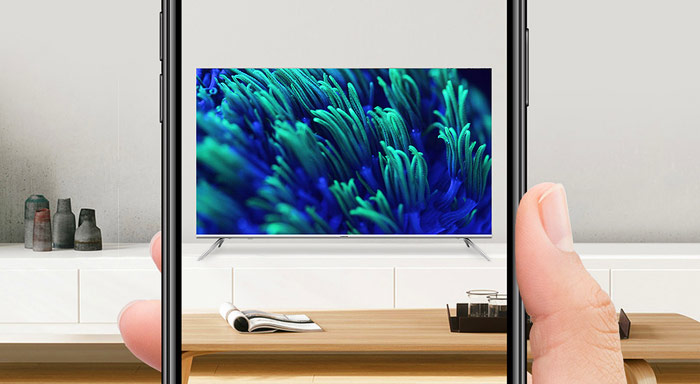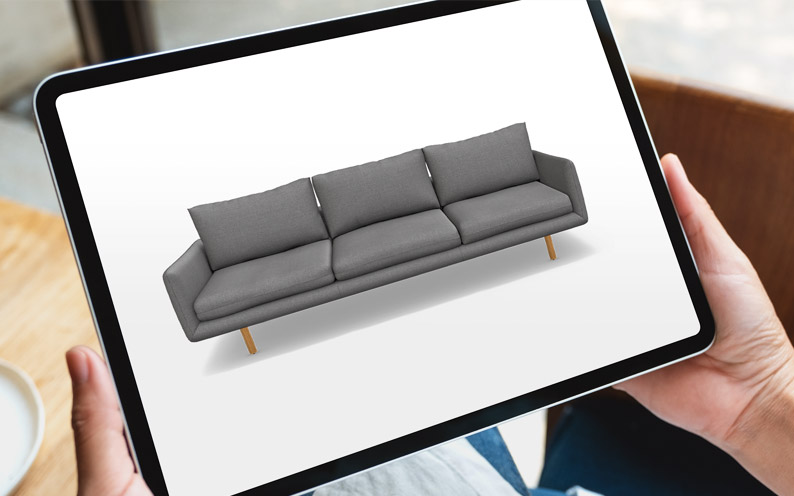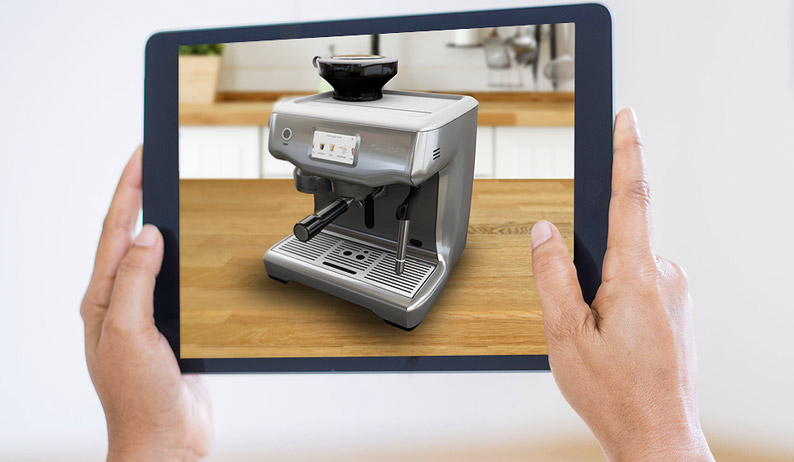- Urban Road – A Smarter Way to Buy Art - October 6, 2019
- Match Your Kitchen Décor with Breville AR - September 19, 2019
- Try Before You Buy with Hisense Home AR - September 15, 2019
Hollywood’s science fiction blockbusters have long foreshadowed the arrival of Augmented Reality. Arnold Schwarzenegger’s Terminator (1984) painted AR as a futuristic display reserved for cyborgs, with computer-generated information overlaying vision and instant, real time information. Total Recall (1990) featured a holographic tennis instructor, while Tom Cruise’s Minority Report (2002) combined hand gestures and mixed reality visual displays. Today, AR is seamlessly weaving itself into real world scenarios. But where did it all begin?
Back in 1962, cinematographer Morton Heilig, pioneered the first entry into Augmented Reality with his invention called the Sensorama. The simulation booth recreated the sight, sound and smell of a motorcycle ride through New York, complete with vibrating seats and the smell of hot dog stands. Later that decade, a Harvard professor invented “The Sword of Damocles”, a peculiar device hanging from the ceiling that immersed its user in computer graphics from another world. While primitive in realism and graphics, it marked the first foray into head-mounted displays.
Jumping forward 40 years, automotive leader BMW, was one of the first companies to release an interactive Augmented Reality magazine advertisement. Users held the print ad up to their webcam and could view a fully 3D Mini Cabrio Convertible from different angles. Marker-based AR was a key stepping stone in Augmented Reality’s history, with logos, QR codes and custom images used as a basis to “anchor” virtual objects to the real world. An obvious limitation was the need to print a physical marker and always have this available when users wanted to experience AR.
In 2012, Google entered the game with their highly anticipated Google Glass. The “techy” wearable glasses could record video and superimposed information over the wearer’s physical environment. While Google Glass featured ground breaking technology, it was clearly ahead of its time and hindered by utilitarian styling that reduced its mainstream appeal.

In 2017, Apple became a major player in Augmented Reality, with Tim Cook promoting it as the “next big thing”. Various sources have indicated that Apple is eyeing a 2020 release for their AR smart glasses and a recent release of their AR framework introduced the ability to place AR objects behind people, propelling the experience to even greater heights of realism. With continued success in the smart watch category (Tim Cook claims that Apple sells more watches than Rolex, Fossil, Omega and Cartier), Apple has the potential to succeed where Google failed.
In the last few years, Augmented Reality developers have released revolutionary AR apps across the iOS and Android platforms. Ranging from games (think Pokemon Go and Harry Potter: Wizards Unite), to home decorating (see Top3 AR and Cosh Living AR), AR has the ability to completely transform how industries conduct business.
Take Hisense’s Home AR app as an example. Developed by INHAABIT, the intelligent iOS app combines ultra-realistic Augmented Reality with advanced product finding technology. It asks you questions about your TV viewing requirements and allows you to measure your space using a virtual tape measure. The app will then recommend the best TV, refrigerator or washing machine based on your answers and allows you to view it in your space with AR. With customer’s increasing individualisation needs, AR can streamline product selection and hence the entire sales process.
The future of AR is almost certainly a combination of consumer and enterprise applications. Notable AR start up, Magic Leap, has raised an astounding $2.6 billion in investments, with backing from powerhouse companies such as Google and Alibaba. Microsoft also debuted a second generation of HoloLens, with a strong enterprise focus and hand gestures straight out of Minority Report. It seems clear that Augmented Reality will change the way we do many things, and in looking forward, we may also want to look back and see what is next in our beloved science fiction movies.




